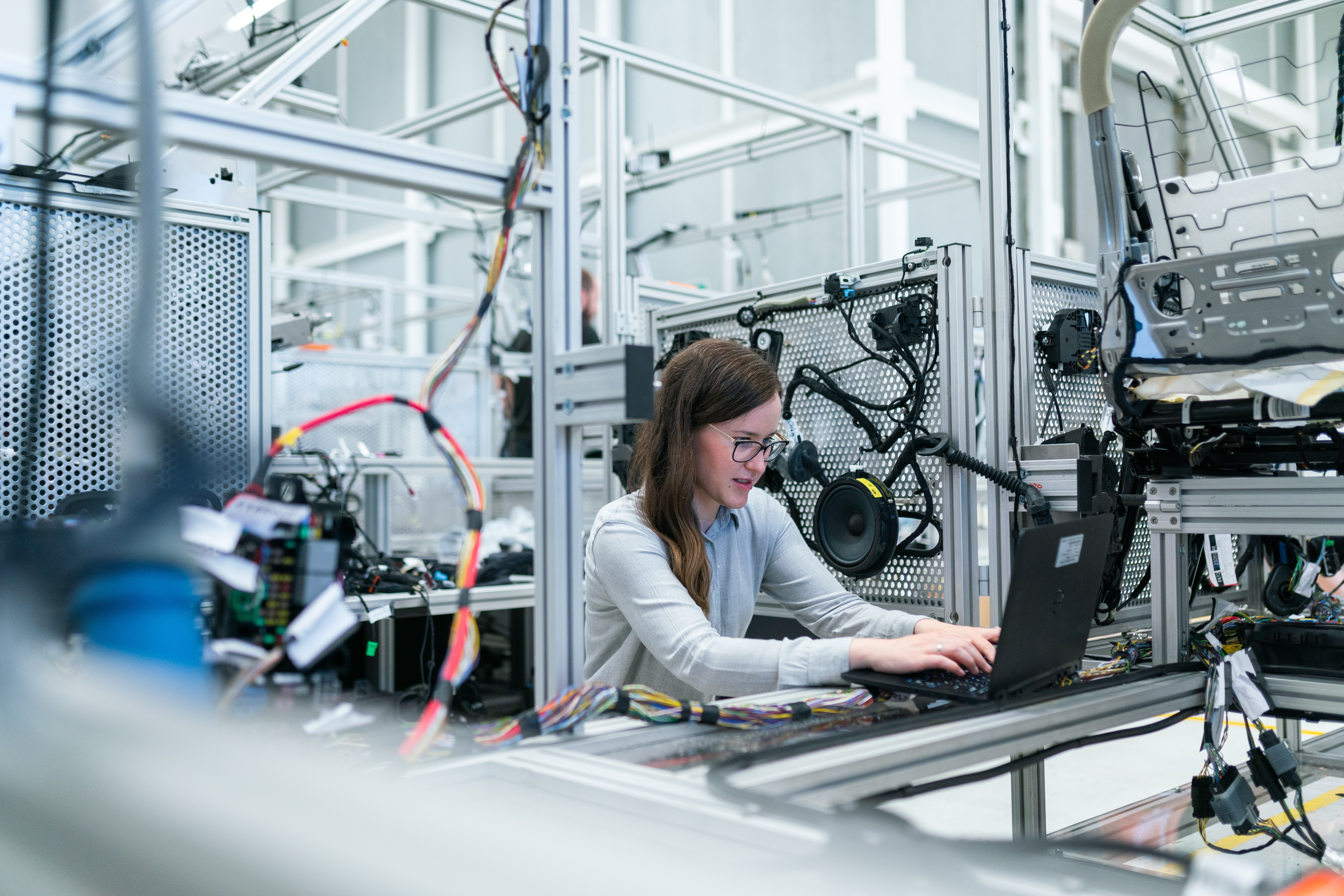by Arianna Tini, UX Designer
Automating production processes with the aim of improving the daily lives of the people involved is the decisive change of mentality to achieve effective and sustainable industrial automation.
In this third article, we will examine the importance of human-centered automation in promoting interoperability dynamics within the production processes and the organization itself.
The concept of interoperability is now dominant in a wide range of sectors, including banking and healthcare. It is also very relevant in smart city contexts such as smart mobility and smart government. In general, interoperability is relevant in all areas where the timely and precise exchange of information determines the quality of a particular process, such as the provision of an urban service or the production of an asset.
Interoperability is therefore extremely relevant also in the industrial sector, because it guarantees a constant flow of information both in terms of horizontal integration and that of vertical integration. It can be defined as the ability of two or more actors (humans or machines) to interact and exchange information useful for collaboration. The focal point of interoperability therefore lies in communication between the players in a system.
In this article we will explore how to promote interoperability starting from the human experience of the automated system, focusing on the semantic level related to the interpretation of information. We will therefore leave the other levels in the background (technical, syntactic and organizational), which are least influenced by human-centered planning.
Promoting interoperability
To promote the human-to-human and human-to-machine collaboration and communication mechanisms that constitute the backbone of interoperability, it is useful to design automation systems starting from a human perspective. This approach provides valid answers to fundamental questions on information flows, on decision support and on internal communication and collaboration systems, for example, related to the improvement of human-machine interaction.
In structuring an effective automation system, NIST’s Manufacturing Interoperability Program cites six factors that impact on interoperability:
- The transfer of data between similar or dissimilar systems;
- The transfer of data between software developed by the same provider, but with different versions in the system;
- Compatibility between different versions of a software (new and old versions);
- The bad interpretation of the terminology used to exchange data and information;
- The use of non-standardized documentation on which the exchange of data is carried out;
- The absence of appropriate testing of compliant applications due to the lack of adequate tools.
Language interpretation and standardization are fundamental parts of semantic interoperability, as evidenced by NIST. It is therefore necessary to favor the former through an adequate design of the latter. In fact, correctly standardizing languages means standardizing the level of communication of information within the organizational areas and is an integral part of the UX design activities that we carry out in TeamDev. Working on these languages at the UX level allows not only their standardization, but also greater ease of use which, in turn, ensures that operators do not feel the language as distant or abstract.
However, interoperability is also influenced by the type of human-machine interaction present in the automated system. It is precisely from the design of a reliable and flexible interaction that interoperability arises at the shop floor level. An effective industrial UX allows you to act on the level of relationship and trust, as already illustrated in previous articles in this series. From our experience, the communication components that we promote in industrial solutions could not fully express their value without adequate human-machine interface (HMI) tools or user-friendly process management software.
Balancing active and passive systems
In this sense, it is useful to report a framework promoted by Magnus Åkerman and Åsa Fast-Berglund (Interoperability for Human-Centered Manufacturing, Springer 2018), which proposes two levels of interaction possible in the field of smart manufacturing. The first level consists of passive systems, which are limited to data management, as in the case of monitoring and control systems. The second level consists of active cognitive automation systems, which support humans in decision-making (decision-support systems, DSS). Together, the two levels offer awareness of what is going on and the results of their choices, in a horizon that ranges from purely operational to strategic.
An effective balance of the two systems allows you to maximize semantic interoperability by promoting data readability. An excess of passive systems does not facilitate the decision-making process in cases more distant from daily operations: emergencies and other anomalous situations are difficult to manage through a line dashboard. On the contrary, an excess of DSS can limit the relationship of the operators with the data, making them less accustomed to their reading and therefore less aware of the intrinsic characteristics of the production process. This limits, for example, the ability of an operator to distinguish between a serious emergency and a limited impact one.
A classic balanced classic application of the two systems, which constitutes a frequent case of work in TeamDev, is given by a production dashboard (monitoring) that allows to detect any anomalies (control) and provides decision support (DSS) through specific data and actions standard of response to the detected problem. Balanced passive and active systems form the backbone of a functional UX in the manufacturing context, from which the interoperability skeleton stems.
Conclusion
The interaction between the actors involved in the automation system and its technology are important enabling factors for interoperability in various sectors, including manufacturing. It is characterized by four distinct levels of complexity: technical, syntactic, semantic and organizational. The semantic level, in particular, is reinforced by the presence of an interaction mechanism centered on the user and on the type of useful information. Once again, it can be concluded that the increase in productivity deriving from automation is not taken for granted, but the result of an accurate design that is partly organizational and partly linked to the UX of processes and tools
More info





